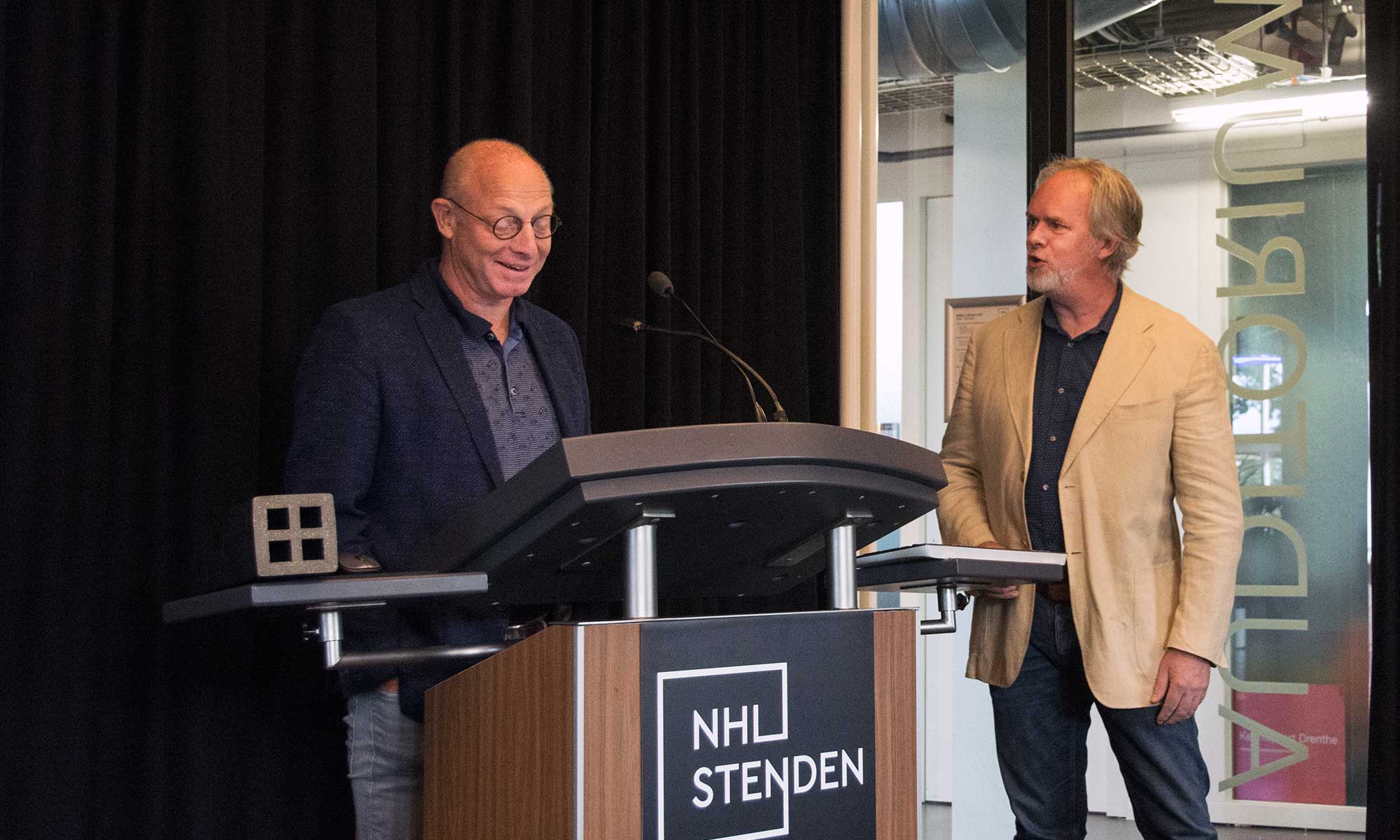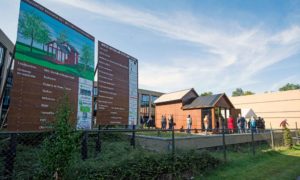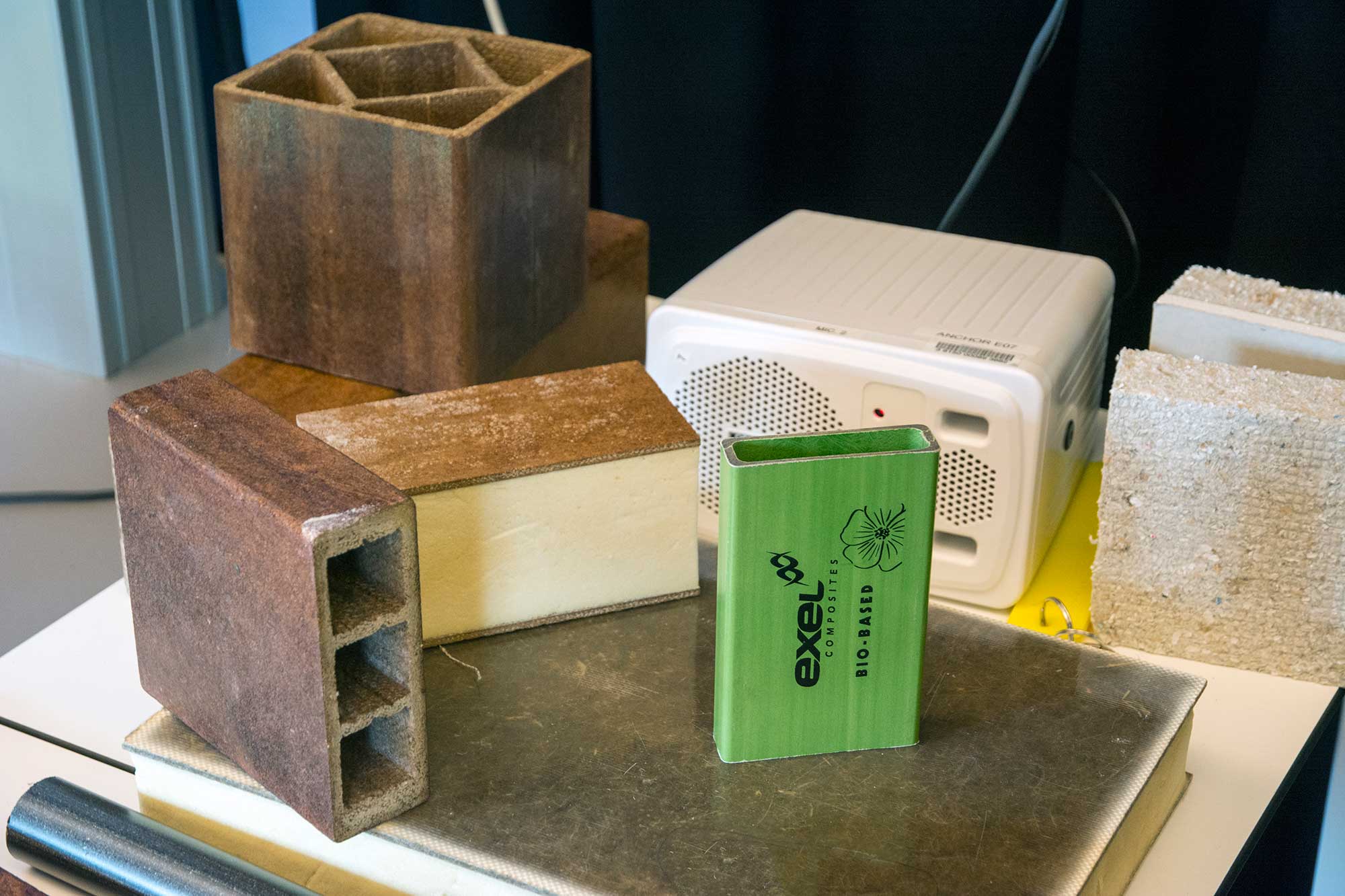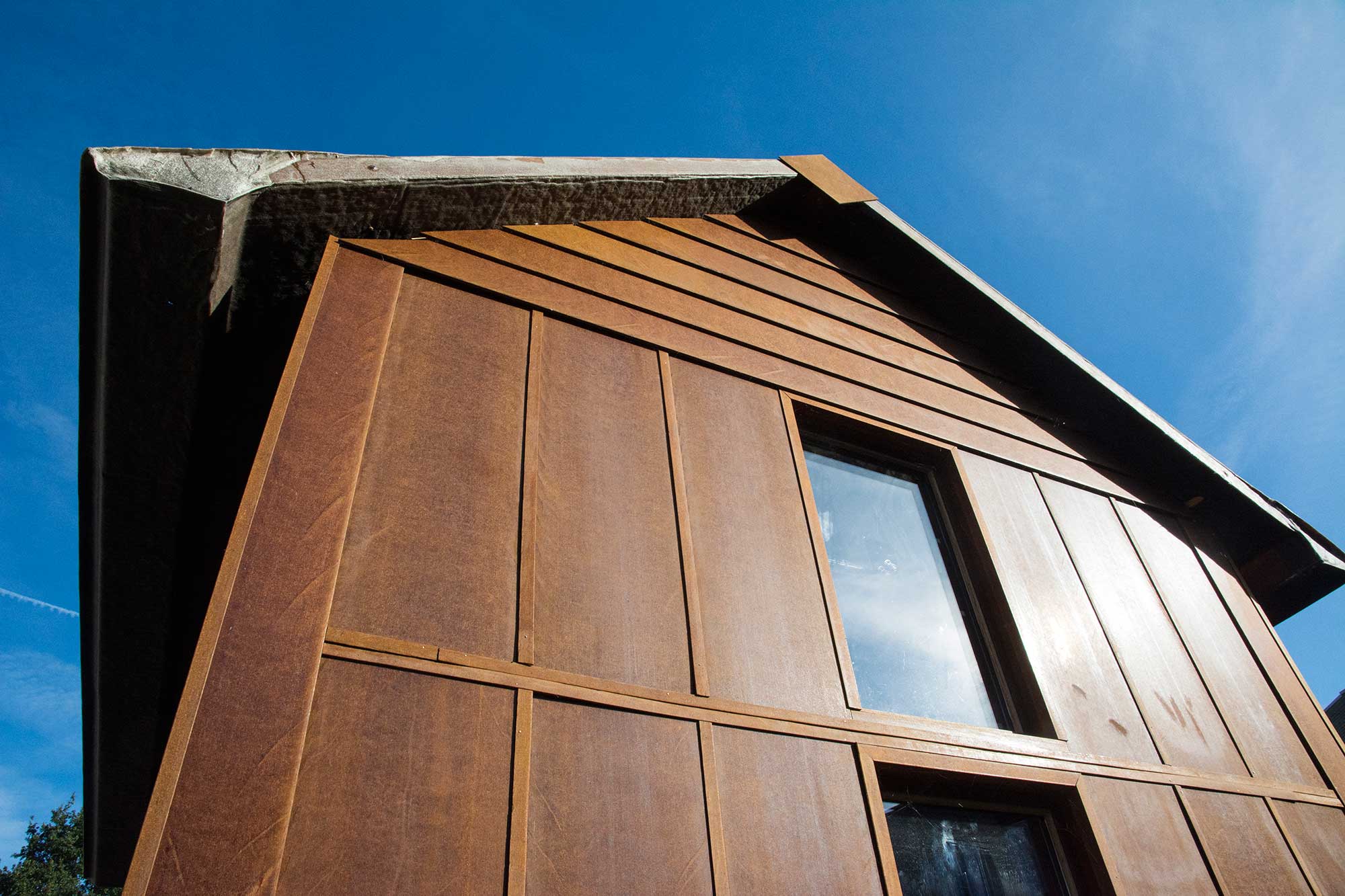The house still contains some nails and screws, but aside from this, the Tiny House is completely agro-based,’ says Daan van Rooijen, Lecturer in Biocomposites at the NHL Stenden University of Applied Sciences. ‘Having the farmer produce the fibres and synthetic materials, this is what we are aiming for.’
New materials are in part required because the growing world population and the high CO2 emissions of the construction industry are putting tremendous pressure on the climate. Resulting in deforestation, climate change and a rapidly declining biodiversity. ‘We believe that it must be possible to do things differently, with far less raw materials and without disturbing natural forests.’
Oil stain
For example, insulating sandwich panels with bio-PUR, paper-based extrusion profiles and structural pultrusion profiles with natural fibres and 100% bioresins were used in the Tiny House. The largest single component used was a single-piece roof panel manufactured by Fiby in Emmen. ‘This is a typical example of what you can do with composite to integrate multiple functions,’ says researcher Rik Brouwer of the Green PAC open innovation centre, a partnership between NHL Stenden and Windesheim University of Applied Sciences. ‘We made use of a new technology known as vacuum injection for this purpose. In this process, all materials are placed on a foam plate and wrapped in film. The air is then sucked out to create a vacuum, after which the resin is allowed to flow inside. This way, we create a sandwich panel that comprises the roof structure, heat insulation and eaves gutter profiles.’
Paper also plays a particular role as a special building material. For example, recycled paper is used as insulation in the sandwich panels manufactured by EverUse. Natural fibre expert Millvision in Raamsdonksveer (NL) together with the German company Naftex developed extrusion profiles for the frames consisting of paper combined with bioresin. Naftex also manufactured the frame structure and floors for the Tiny House. Millvision furthermore collaborated with the Faser Institut Bremen (FIBRE) on sandwich panels in which paper functions as the skin panel. The result is a functional panel for inside use, which also looks nice. ‘You can create a beautiful design with natural fibres,’ says Managing Director Harm Jan Thiewes.
Mass production
The technologies developed for the Tiny House are all meant for mass production for the house building sector. This was one of the basic principles adopted by Interreg VA’s Biobased House Building project in the Ems-Dollart Region (EDR), for which the realisation of the Tiny House is the crowning achievement.
You not only need to demonstrate that materials are suitable for house building on the basis of measurements and lab tests, you must also demonstrate this in actual practice. This is why the Tiny House simply had to be build in reality. In this case by students from NHL Stenden University of Applied Sciences (HBO), Drenthe College for Senior Secondary Vocational Education (MBO) and Hondsrug College (secondary education), under the leadership of Henk Loves of BioFrame/Kuipers & Koers Bouw – a construction company. He is enthusiastic about the cooperative effort: ‘When I get comments from young people, such as “I learn more in one day spent in your company than I learn in five days at school”, I know that we have accomplished something worthwhile.
Loves refers to the project as a journey of discovery, which most definitely has not yet reached its final destination. ‘For me the opening of the Tiny House is the starting point for an entirely new process, Biobased Building 2.0, to see how we can increasingly work with biobased materials from the region and to create a product that is successful in the market. Even more than we do today, we must intensify collaboration with German companies and aim to involve government organisations. This is something to which I would like to devote my efforts.’
New innovation
‘What you see here is not the end, but the beginning of new innovation,’ emphasises Karel Groen, Director of the Ems-Dollart Region. ‘We are located here in the largest German-Dutch border region, with a 20,000 m2 surface area. But it is also a thinly populated area with few large cities. It is often difficult to find one another across the border because of the distances, but also because we often know very little about each other. We therefore hope that increasingly more companies and knowledge institutes will come together in projects like this and work together in a cross-border partnership. Because there is a great deal of knowledge on both sides of the border; we do not need to acquire it all from faraway places. I hope that everyone will continue to make an effort to this end and that we, as a kind of oil stain will make more and more people enthusiastic about the opportunities that exist in this border region, so that we truly are a growth region.’
This article was created in cooperation with the Ems-Dollart Region
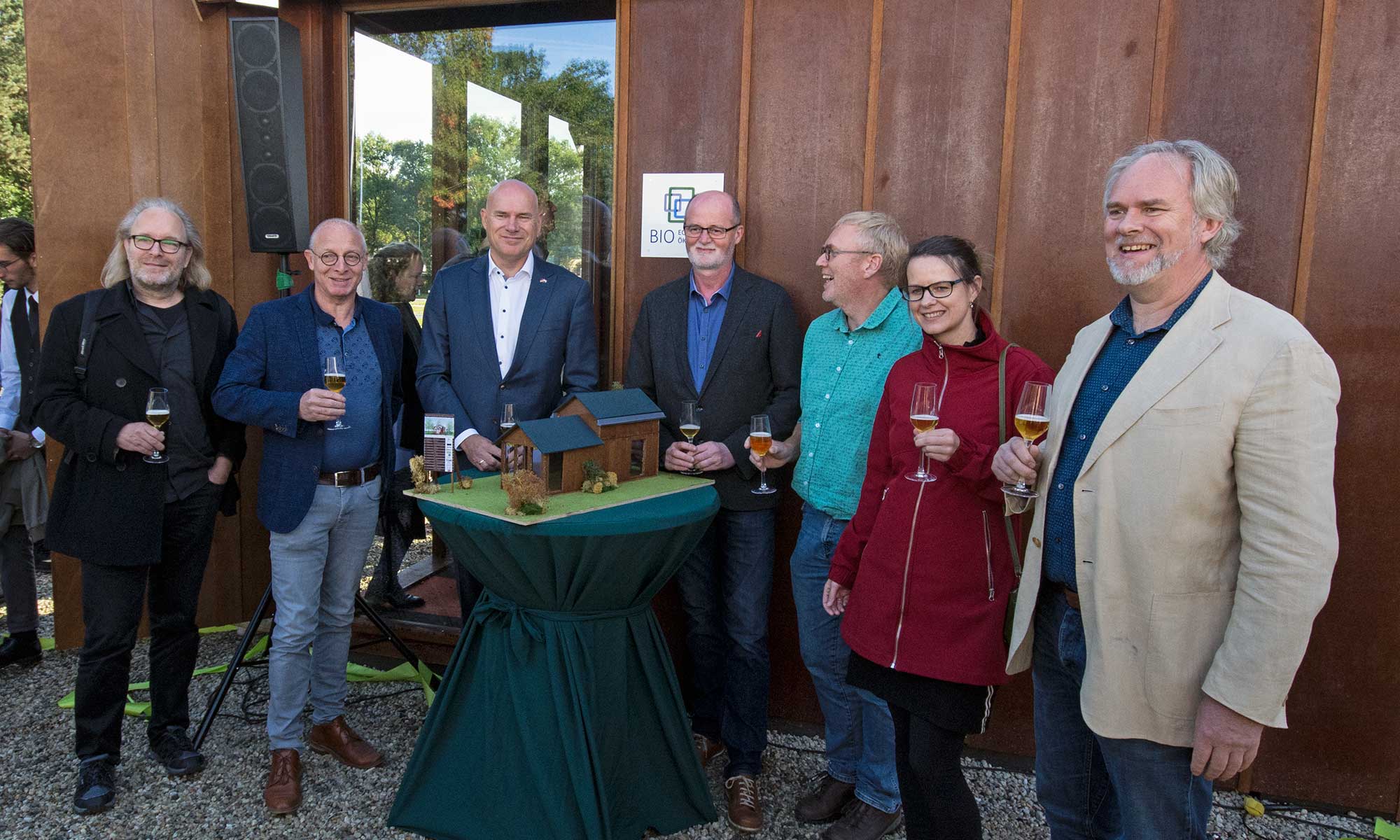
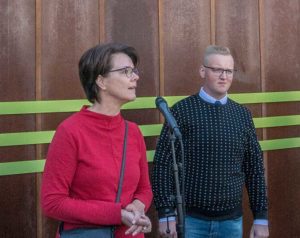 What did the students think of building the Tiny House? ‘I thoroughly enjoyed building something tangible,’ says Bas, a student at Drenthe College. ‘It was interesting to see what is going to happen in the construction industry and what we are going to do in the future with various building materials, such as biocomposites, bioresin and bio-PUR.’
What did the students think of building the Tiny House? ‘I thoroughly enjoyed building something tangible,’ says Bas, a student at Drenthe College. ‘It was interesting to see what is going to happen in the construction industry and what we are going to do in the future with various building materials, such as biocomposites, bioresin and bio-PUR.’